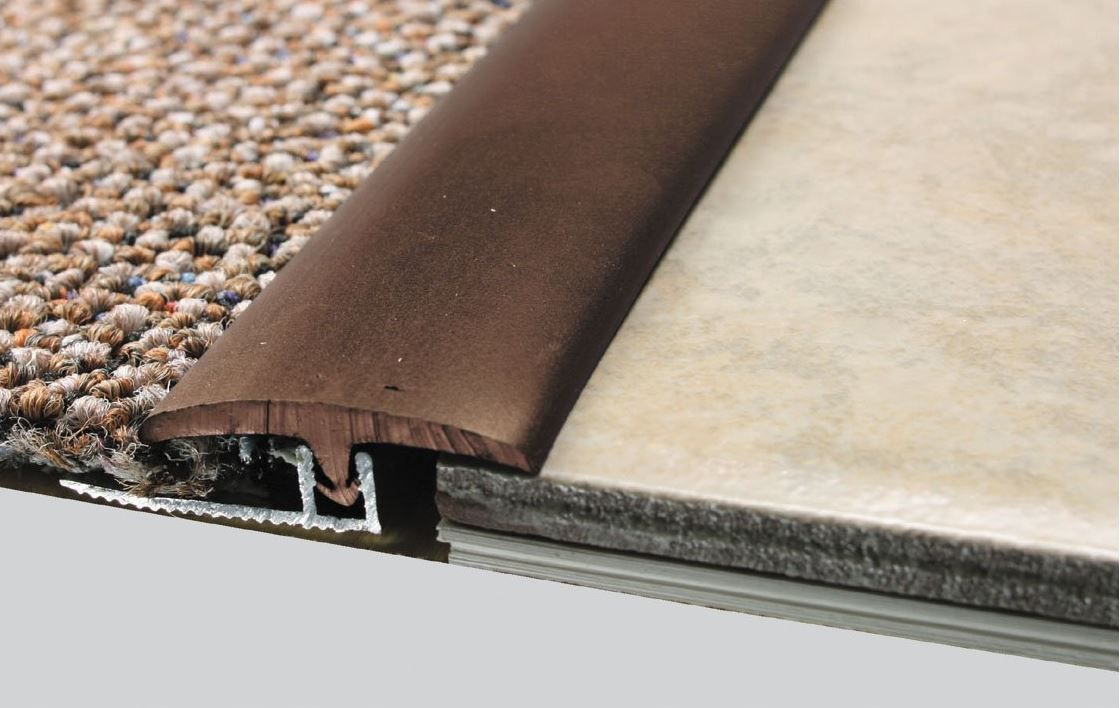Have you rented a house with unsightly transitions between different types of flooring? Don't worry, you're not alone!
Dealing with transitions between flooring materials can be a tricky task, but with the right knowledge and tools, it doesn't have to be.
In this article, we'll explore how to deal with transitions between flooring materials in a way that is easy and stress-free to ensure smooth transitions between surfaces in your new home.
Introduction
Flooring plays a big role in any home, and choosing the right type is key to the overall look and feel of your space. Each option comes with its own pros and cons, so it’s important to weigh these up when making your choice. The most common types include carpet, tiles, hardwood, and vinyl.
Carpet is a popular pick for bedrooms and living rooms thanks to its softness and warmth. Tiles are often used in bathrooms and kitchens because they’re durable and water-resistant. Hardwood is a timeless choice that brings warmth and elegance to any space, while vinyl is a budget-friendly, durable option that can mimic the look of other flooring types.
Choosing the Right Flooring for Each Room
Choosing the right flooring for each room is crucial when it comes to managing transitions. We will provide factors to consider when selecting flooring types for different rooms and discuss the pros and cons of carpet, tiles, hardwood, and vinyl flooring.
When choosing flooring for each room, think about factors like foot traffic, moisture, and your style preferences. For high-traffic areas like entryways or hallways, durable options such as tiles or hardwood work best. In spaces prone to moisture, like bathrooms or laundries, tiles or vinyl are ideal thanks to their water-resistant qualities.
Carpet is a great choice for bedrooms or living rooms where comfort and warmth matter most, though it’s less ideal in areas prone to spills or stains. Hardwood flooring offers a timeless, elegant look, but it does tend to need more upkeep than some other flooring options.
Understanding Transition Strips
Transition strips are a critical component in creating a seamless transition between different types of flooring. They are narrow pieces of material designed to bridge the gap between two flooring surfaces, and they come in various styles and finishes.
The right transition strip will depend on the height of your flooring, the material it's made of, and the overall look you're trying to achieve.
There are a few types of transition strips to choose from, including T-molding, reducer, and threshold strips. T-molding is used to bridge the gap between two floors of the same height, while reducer strips handle the transition between floors of different heights. Threshold strips are designed for doorways, such as the space between a living room and a hallway.
When selecting the right transition strip for your flooring project, be sure to consider the colour, texture, and finish of the material. You want to select a strip that blends seamlessly with both flooring surfaces and complements the overall aesthetic of your space.
Planning Ahead for Transitions
Before you begin any flooring project, it's essential to plan for transitions in advance. This will ensure that you have the right materials on hand and that the transitions are seamless. Consider which areas of your home will need transition strips and take measurements accordingly.
For example, if you're transitioning between hardwood and tile, you'll need to determine the height difference between the two floors and select a transition strip that can accommodate that difference. You'll also want to ensure that the strip is wide enough to cover the gap between the floors, and that it's the right colour and finish to match both flooring surfaces.
Installing Transition Strips
Once you’ve got your transition strips, the next step is installing them. You can use adhesive, nails, or screws—depending on the strip material and the surface it’s being fixed to. Before starting, make sure the surfaces are thoroughly cleaned to ensure a strong, secure bond.
When installing a transition strip, always follow the manufacturer’s instructions closely. Some strips may need adhesive on the bottom of the strip itself, while others require it on the floor. Take care to align the strip properly, secure it well, and use a level to make sure it sits flush with the surrounding flooring.
If you're installing a threshold strip, be sure to use a sealant to create a watertight seal between the strip and the floor. This will prevent moisture from seeping underneath the strip and potentially causing damage.
Maintaining Your Transition Strips
Like any feature in your home, transition strips need regular upkeep to stay in good shape. Wiping them down with a damp cloth or mop will help clear away dirt and debris that build up over time. If they become loose or damaged, repair them promptly to prevent tripping hazards or further wear.
If you notice that your transition strip is warping or cracking, it may be time to replace it. This is particularly important if you're dealing with a threshold strip, as water can seep underneath a damaged strip and cause damage to your flooring and sub floor.
Let's take a closer look at how to deal with some common transitions between flooring materials.

Carpet to Ceramic Floor Tiles
When transitioning between carpet and ceramic floor tiles, a reducer strip is typically used. This type of transition strip is designed to bridge the height difference between the two flooring surfaces, creating a smooth transition. A reducer strip can be made of metal, wood, or plastic, and it should be selected based on the height difference between the two flooring surfaces.
Z-bar molding is a popular technique used for transitioning between carpet and tiles. It involves installing a metal strip over the edge of the carpet and the tile, creating a smooth transition between the two. Carpet to tile transition strips are another option that can be used to create a seamless transition between carpet and tiles.

Tiles to Vinyl Flooring
When transitioning between tiles and vinyl flooring, a T-molding strip is often used. This type of transition strip is designed to bridge the gap between two floors that are of equal height. T-molding strips can be made of metal, wood, or plastic, and they come in various styles and finishes to match the surrounding flooring surfaces.

Carpet to Floating Timber Floors
When moving from tile to hardwood, it’s important to choose a combination that blends well for a seamless look. For instance, if you’ve got dark hardwood, pick tiles that complement its colour. You can also use T-bar or reducer molding to create a smooth, clean transition between the two surfaces.

Carpet to Hardwood Flooring
T-bar molding is a popular technique used for transitioning between carpet and hardwood. It involves installing a metal strip over the edge of the carpet and the hardwood floor, creating a smooth transition between the two. Reducer molding is another technique that involves gradually tapering the height of the hardwood floor to match the height of the carpet. Baby threshold molding is a third technique that involves using a small strip of wood to create a transition between the carpet and hardwood.
Ceramic to Solid Timber Floors
When transitioning between ceramic and solid timber floors, a reducer strip is typically used. This type of transition strip is designed to bridge the height difference between the two flooring surfaces, creating a smooth transition. A reducer strip can be made of metal, wood, or plastic, and it should be selected based on the height difference between the two flooring surfaces.

Carpet to Polished Concrete
When transitioning between carpet and polished concrete, you usually don’t need a transition strip. But if you prefer one, a T-molding strip works well. It’s designed to bridge the gap between two floors of the same height and can be made from metal, wood, or plastic, with a range of styles and finishes to match your flooring.
Conclusion
Transitioning between different flooring materials requires careful planning and consideration. By selecting the right transition strip for your flooring project, you can create a smooth and visually appealing transition between flooring surfaces. Remember to take measurements and plan ahead before beginning any flooring project, and always follow the manufacturer's instructions carefully when installing transition strips. With the right tools and knowledge, you can tackle any flooring transition with confidence!






















